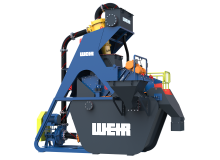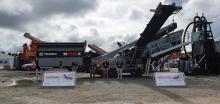
Since 1992, CDE, a leading manufacturer of wet processing equipment, has pioneered cutting-edge technologies for a range of applications in the sand & aggregates, mining, C&D waste recycling and industrial sands sectors. In that time, the company has commissioned almost 2,000 turnkey wet processing projects around the world. CDE director of Engineering Kevin Vallelly says dewatering screens are an essential component in every project.
“CDE dewatering screens present a significant opportunity for materials processors. There are massive economical gains to be had by introducing one to a plant set-up. Not only do they greatly improve the quality of the end product by radically reducing the moisture content, but when integrated with a highly efficient wash plant, such as CDE’s EvoWash, they retain more valuable material and boost the quantity of the end product.
“We have at least one dewatering screen commissioned at every customer site around the world. Often, there are multiple screens operating simultaneously.
“Assuming all of our customers are operational at any one time, CDE screening technology is supporting the materials processing industry to dewater up to 250,000 tonnes of sand per hour.”
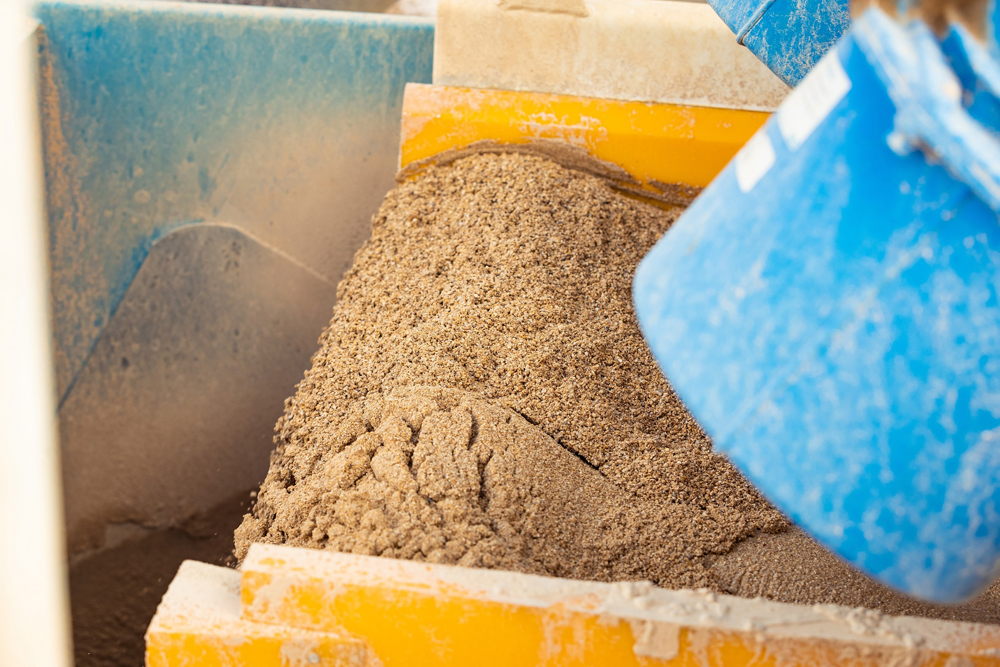
In 2014, CDE set out to reimagine the traditional dewatering screen when it launched its patented Infinity screen range to the market.
“Our Infinity range is one of the most efficient dewatering screens available in today’s market,” Vallelly explains.
“The aim was to engineer a solution that would offer materials processors advanced dewatering capability, a lifetime of efficient performance, and a significant reduction in power consumption to help drive down operating costs.”
He says the range has been a huge success, with customers valuing the durability and prolonged operational life of the screens.
“This is due to the unique design of the range. Our patented trilogy system for the construction of the screen side walls eliminates welds and ensures optimal performance is maintained for the life of the screen.
“The key advantage of its design is that it offers a robust, lighter screen requiring less power to run. It can generate the same acceleration as conventional screens, but with less weight.”
Compared to traditional dewatering screens, CDE’s Infinity screen requires 20% less power to operate.
As we all know in the materials processing industry, the value of an end product is greatly improved when washed and even more so when that product is drier.
Vallelly says, “Take sand screws as an example. The sand product processed this way is typically discharged with between 23% to 25% moisture content. That figure has the potential to be even higher when dealing with finer material.”
Compounding this, he says, is the requirement for materials to then be stockpiled and dried before they are ready to be sold.
“That wait has a real impact on return on investment. With CDE Infinity screen technology you can expect an average down to 12% moisture content, meaning your sand product is ready for the market straight from the belts.
“Not only does a high-frequency dewatering screen improve product quality and cash flow, but it also reduces operating costs. As the material is market-ready there’s no requirement for double handling and it eliminates stockpile drying time.”
An integral part of the modular wet processing plants CDE designs, Infinity screen technology is also available to the market as individual units that can be integrated into a customer’s existing process.
“Our Infinity screens are a fundamental component in our plants, including the EvoWash sand washing plant and the AggMax, which incorporates washing, scrubbing, screening and lightweight removal all on one chassis,” Vallelly says.
Since its launch, the range has significantly expanded to include horizontal sizing screens, grizzly screens, dewatering screens, circular motion incline screens and fine sand screens for specialist applications.
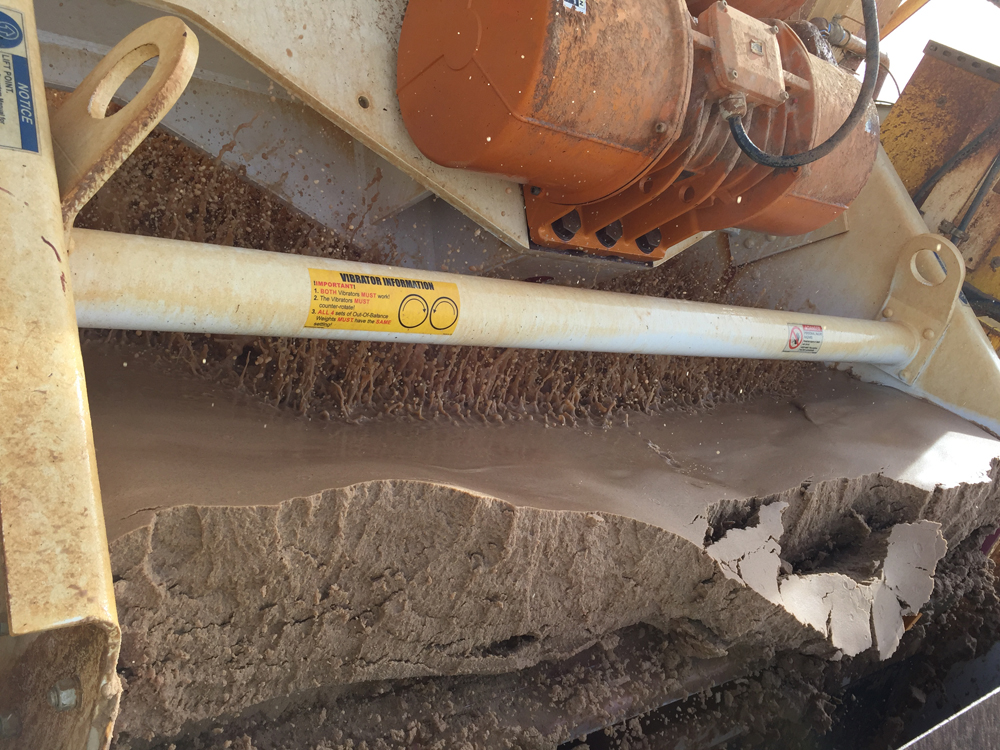
The expansion of the range was first revealed at Bauma in 2016 and since then CDE has supplied its screening technology across the EU market.
They were first introduced to the North American market at CONEXPO-CON/AGG in 2017, one year before the Northern Ireland-headquartered company announced it was to expand further into the region with the opening of its new headquarters in Cleburne, Texas. With a greater foothold in the region, materials processors in North America are now also enjoying the operational benefits of CDE dewatering screens.
Recently, CDE worked with Wheatcraft Materials Inc., a family-owned and -operated business that has supplied the central Texas market and its local ready-mix batching plants with quality sand and gravel products for over 40 years.
Typical of most operations in Texas and in other parts of North America, Wheatcraft Materials Inc. was operating with a traditional sand washing set-up, a horizontal classifying tank and sand screw.
CDE upgraded the process with its EvoWash sand washing plant, which integrates the patented Infinity screen.
Curtis Wheatcraft says the traditional equipment employed on the site had its limitations.
“One of the biggest challenges we identified was that we were losing valuable sand due to the inefficiencies of the older technology.”
CDE technical engineers visited the site and closely monitored the plant process to better understand the challenges and limitations facing Wheatcraft Materials Inc. Sample feed material was tested, and results analysed, to develop an engineered solution that would enable the company to capture valuable fines to maximise its yield and profitability.
Taking into consideration the site footprint and the customer’s requirements, CDE proposed an upgrade to the Wheatcraft Materials Inc. plant that would integrate with the existing system to ensure the company could continue to operate at full feed capacity.
Tom Wick, CDE business development manager in North America, says: “We replaced the traditional horizontal classifying tank and sand screw with the patented EvoWash technology, which is a step above what everybody else has.”
CDE’s signature EvoWash technology – a compact, modular sand washing system – integrates a high-frequency dewatering screen, sump and hydrocyclones to provide unrivaled control of silt cut points and to eliminate the loss of quality fines.
The EvoWash also incorporates CDE’s patented Infinity Screen technology for optimal dewatering results which enables its customers to produce a range of high-quality sands that are market-ready straight from the belt.
Plant manager Joe Davila said there was an immediate boost in product yield.
“As soon as we turned it on and started feeding plant, we could tell there was more material hitting the ground than normal. We were making almost twice as much sand as we had been making in the past.”
On sand production, Davila says: “We were doing about 300 tons, but with the CDE EvoWash we’re probably doing about 500 tons, and on a real good day we’ll do 600 tons.”
Higher feed capacity has enabled Wheatcraft Materials Inc. to increase its production levels across the board.
“Now the plant can handle everything we can put in it,” Davila explains. “We increased production on our gravel products simply because we’re able to feed the plant more. As soon as our smaller gravels hit the ground they’re pretty much sold. It’s the same with our larger gravels, too. They’re ready for the market as soon as they leave the belt and the local ready-mix company pretty much buys it all from us.”
The Wheatcraft Materials Inc. wash plant now has a production capacity of up to 200 tons per hour, and the equipment paid for itself in just four months.
Vallelly concludes: “The Wheatcraft Materials Inc. story is a prime example of the growth opportunities that CDE Infinity dewatering screens offer customers, whether they’re based in North America or in Europe. The introduction of the EvoWash with integrated dewatering screen has enabled them to remove more moisture from their sand in a fraction of the time.”
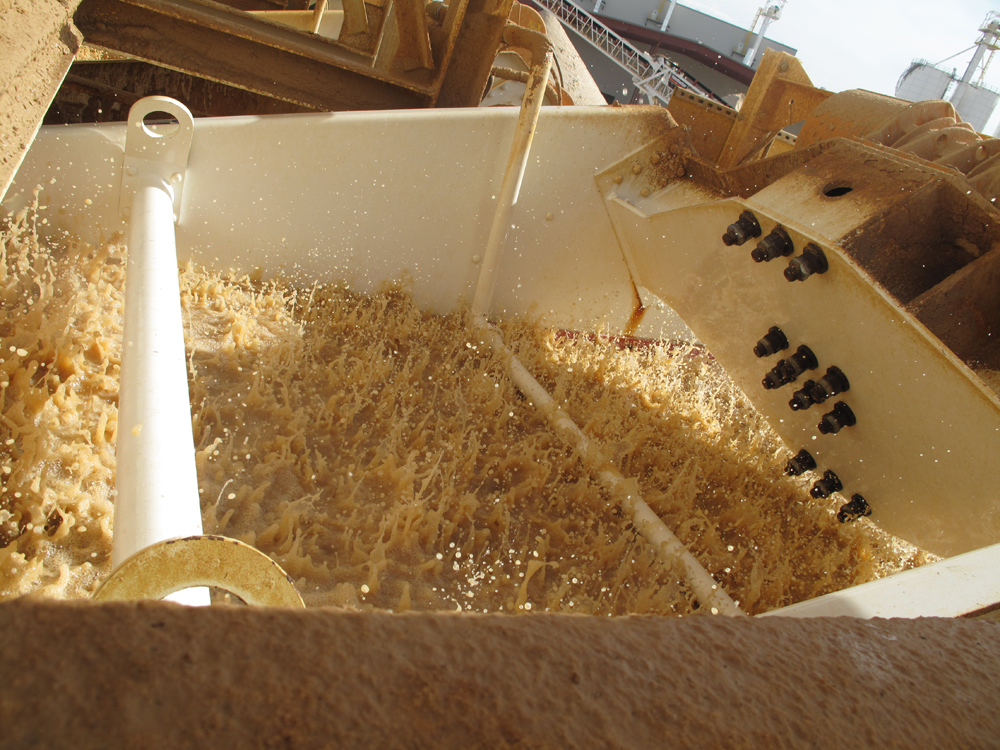
A dewatering screen is different from a traditional sizing screen, notes Alan Bennetts, global product manager for Washing & Classifying at McLanahan Corporation.
“The main purpose of a dewatering screen is to retain as much material on the screen deck as possible while removing as much water as possible,” says Bennetts. “Equipment design and desired moisture level of the discharge are the two main factors used to size a dewatering screen.
“Dewatering screen design deals with the screen’s ability to handle the throughput. This boils down to the crossbeams and strings underneath the screen media and the media itself. Too much mass on the screen will begin a cascade of failures. These failures can show up in a number of places, but one of the easier to control and easier to observe is where the screen is isolated at the mounting point.
“Isolation is achieved with rubber buffers, coiled springs or other methods that are designed for the upper mass limitation of the dewatering screen’s physical capacity. Each one of the isolation methods has a limited ability to recover from deformation caused by overloading.”
Bennetts says that once permanent deformation or breaking has occurred, the vibration of the screen is no longer fully focused on the effort to dewater the material. This impacts the life of the dewatering screen and the effectiveness of the dewatering process.
Monitoring the height of material discharge is another way to observe overloading, Bennetts continues, but it is not applicable to fine material dewatering. Therefore, the screen structure sets the upper level of physical capacity, but many applications never approach that limit because of the other main factor, which is desired moisture level.
“The desired moisture level of the discharge is the other main factor used to determine the dewatering screen’s effective capacity.
“The majority of the time, the goal is to make a ‘drip-free’ product. That means if a person was to grab a handful of the dewatering screen discharge and squeeze it into a ball, there should be no water dripping out.”
Bennetts highlights that several physical properties of the dewatering screen and the material influence water removal rate, including the drainage rate of the screen; the drainage rate of the material; and the drainage rate of the screen.
“Every dewatering screen has a maximum drainage related to the open area of the screen media. The larger the open area, the higher the drainage rate or the amount of water that will pass through the screen media.
“The open area has to be balanced against the opening in the screen media. Too large of an opening will allow material to go through the screen deck along with the water. In some cases, this may be desired.
“Alternatively, if the opening is too small, the drainage rate may not be sufficient to adequately dry the material.”
Dewatering screens generally have a much lower open area than a sizing screen, adds Bennetts. Because of this, it is beneficial to introduce the new material to the dewatering screen at 50% solids by weight or higher.
The lower amount of water in the new feed to the screen will, says Bennetts, increase the chance of retaining fines on the screen and producing a drier product.
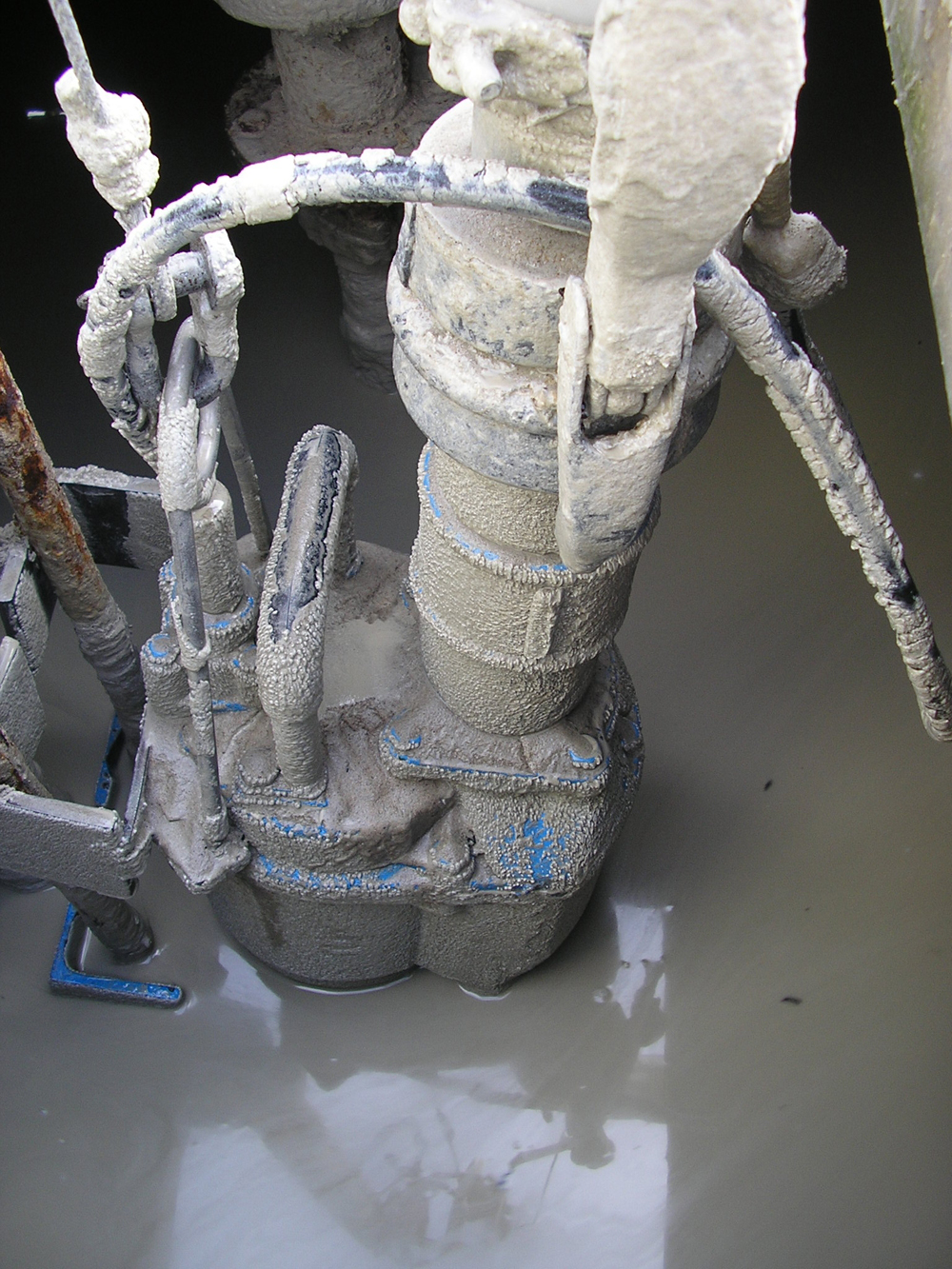
“The material itself has a drainage rate and is a major influence in the water removal process. The different physical characteristics have to be considered for each application.
“The gradation of the material is an important factor, as coarser material generally has a higher drainage rate and allows the dewatering screen to operate at high capacity.
“A coarse material will have a thicker bed depth in terms of measurement but will have less layers of particles. This creates an easier path for the water to move through the material and report to the screen’s underside.”
Bennetts notes that coarser material’s capacity on a dewatering screen will be close to or at the screen’s physical capacity and will generally have a lower percent moisture.
In contrast, a fine gradation will reduce the capacity of the unit. Material with a finer gradation will have more layers and the material will be tightly packed. This creates a more difficult path for the water to drain through the material and report to the underside of the screen media.
“To further complicate the matter, some material can have interlocking characteristics, which will further decrease the drainage rate through the material. Even though a drip-free product is achieved, the finer particles have a tendency to retain a larger percent of moisture.
“The comment ‘Fines follow the water’ is one I have repeated numerous times, but it is still true. The water will carry finer particles through the screen openings. This leads to difficulty retaining the finer particles on the screen deck.
“It is especially tricky to retain material that is smaller than the screen media opening. As mentioned above, the finer material will have more layers, but the bed depth will be less. Keeping the material on the screen deck longer will improve the dewatering process. This is especially true if the coarsest fraction is kept on longer.”
Bennetts says that, in the end, the drainage rate of the screen and the material drive the sizing for most applications.
“There are several methods to increase each of the drainage rates. Some of them, such as weirs and dams, attempt to increase the material drainage. Other approaches, such as speed and media openings, focus on the screen drainage.
“Because each application has its own unique properties, it takes experience and experimentation to find the right adjustment to maintain throughput and produce the driest discharge.”
“If concrete is involved, things get tough. ‘Regular’ water pumps often wear out faster than economically acceptable. However, for some applications even the smallest model is sufficient,” says Birger Schmidt, European sales manager for Tsurumi, the Japanese pump specialist.
“The processing of finished concrete elements usually involves the use of clear or process water to cool drilling and sawing machines,” says Schmidt.
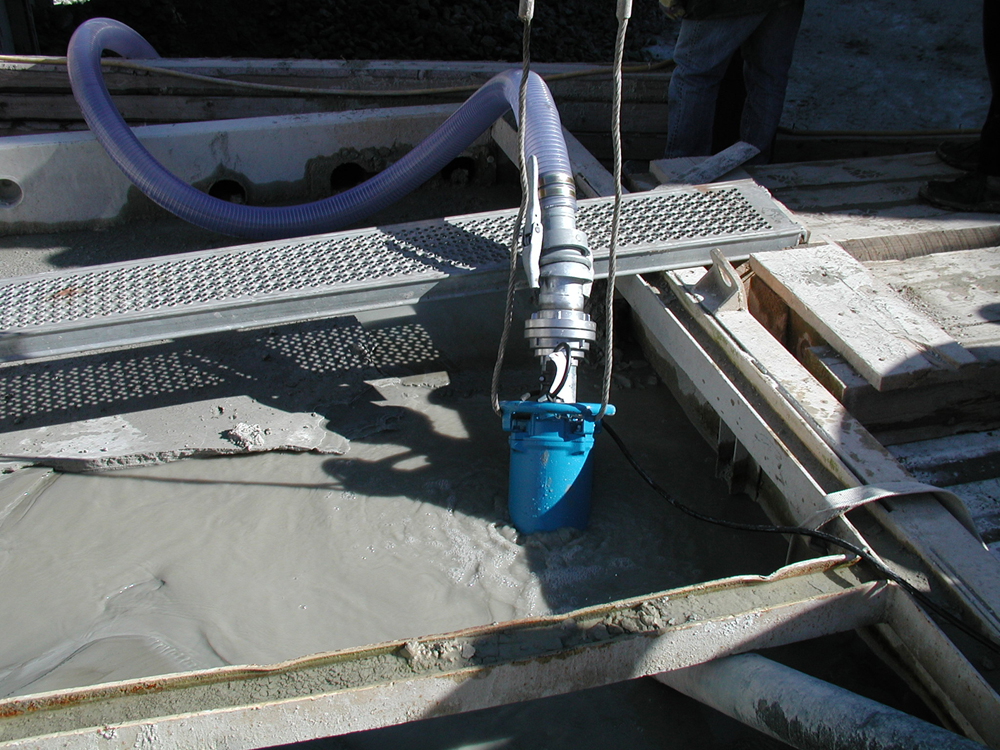
“If no tap line is available for this purpose, improvisation is key: a barrel with a pump is already enough. Tsurumi has developed a “miniature” pump for this scenario, the Family-12, which is as small as a football. Nevertheless, it has a lot to offer with only 100 watts of motor power, it manages 80 litres per minute, pumps up to two floors and does not even mind granular dirt (up to 6 mm diameter). This residue dewatering pump empties a water barrel, stopping only at a residual level of one millimetre. Since only moist whiff remains, the 3.4kg pump even replaces the need for final drying with a cloth, for example.
“Those who need more should consider the larger model LSC: also a residue dewatering pump, but providing 170 l/min and 11-metre maximum delivery height. The more powerful model is also the basic equipment of many fire brigades. The technology has proven its worth, and there is no backflow of water even when the pump is lifted.”
Schmidt says that concrete recycling takes on a different dimension. This involves residual water contaminated with cement or concrete residues.
“These waters may contain grain sizes in the micrometre range but may also include crumbly lumps of concrete up to 30mm in size. The larger pieces are sieved out in a water bath. The remaining residual water containing cement grains and other fine materials is used to rinse out truck mixers or is returned to the production process. Dewatering pumps with “concrete suitability” take over these tasks.”
Schmidt notes that Tsurumi has three pump series – KTZ, KRS and UZ – which are all well suited for ‘hard’ recycling water. Among them is the frequently selected KRS2-80 for up to 100m³ per hour flow capacity and almost 16-metre maximum delivery head. The KRS2 series is said by Hoffman to be particularly characterised by its powerful agitators at the intake opening to make media with a high solid content more fluid.
He continues: “A common design aspect is the absence of the cooling jacket. This is a characteristic feature of ‘concrete-ready’ pumps and is used to dissipate heat from the motor. Cooling jackets would wear quickly from the inside due to the abrasive particles in the pumped medium. Instead, the heat dissipation takes place via the large dimensioned housing of the submerged pump, which dissipates the heat to the surrounding medium. Nevertheless, pumps with cooling jackets (such as the NKZ series from the above manufacturer) are also sometimes used. The specific task defines the model selection.

“The core task of the designs is, therefore, to prevent rapid wear and tear of the internal components. The Japanese keep the abrasive medium away from the neuralgic components. On the design side, they rely among other things on a double internal mechanical seal without water contact. Also, a shaft sleeve with sealing ring and several sealing lips protect the shaft from the abrasive particles in the water flow. The fact that many components such as the impeller, wear plate and not least the housing are made of hardened materials such as silicon carbide in the shaft seal helps to extend the service life. A specially developed oil lifter lubricates the pump in every position so that users can even face the thermally sensitive slurping or dry running with confidence.”
Schmidt says that if more than the usual 30mm maximum solid-handling diameter is required, special pumps such as the up to 100mm solid-handling diameter capacity UZ series can be used. They allow even thick lumps to pass through the unit without damage. Thanks to its particularly low speed, this slow-moving pump is also more resistant than its fast counterparts (at a comparable flow capacity).
Atlas Copco has developed a new addition to the WEDA submersible dewatering pump range with the WEDA S50. Fitting into the S family of WEDA sludge pumps, the new model complements the other pumps in the range in terms of specifications.
The WEDA S range is designed for thick, soft, wet mud or other similar mixtures. These pumps are ideally suited for construction dewatering, industrial or refining applications.
The technical specifications of the new S50 model place it between the S30 and the S60 pumps. It offers a maximum flow of 1450 l/min while pumping sludge with a specific gravity of up to 1400kg/m³. The S50 has a rated output of 4.8kW and maximum solids-handling size of 50 mm, which is the same as both the S30 and S60 models.
“The WEDA S50 is an ideal pump for rental companies and general contractors where they don’t have to worry about what goes in the pump,” explains Hrishikesh Kulkarni, product manager, Atlas Copco Power and Flow division. “Accordingly, these vortex-designed pumps are ideal for abrasive media and handling solids up to 50mm. The S50 fits neatly into the existing range of Sludge pumps, making our S family portfolio complete with a range from 0.5-1-3-5 and 7.5kW.” The Sludge portfolio covers a wide range of applications such as cement plants, industrial process water, sedimentation tanks, treatment plants, construction sites etc.
The WEDA S50 comes with the standard WEDA+ features, including rotation control, phase-failure protection, thermal switches in each motor winding, and 16-amps phase-shifter plugs. All WEDA+ pumps are fitted with a 20-metre cable and the reinforced cable entries ensure high resistance to water leakage.
S50 pumps are built with hardened high-chrome impellers and volute, which provides high wear resistance. The aluminium alloy construction also offers high corrosion resistance. All these features combine to ensure durability and reliability in harsh environments. Low-weight materials have the extra benefit of making handling and transportation easy. The Sludge range along with the new S50 is, therefore, an attractive option for rental use in the construction and industrial sectors.
For extra protection, the casing rib design offers external cooling to the motor in case of dry running, which gives the S50 exceptional dry running capabilities.
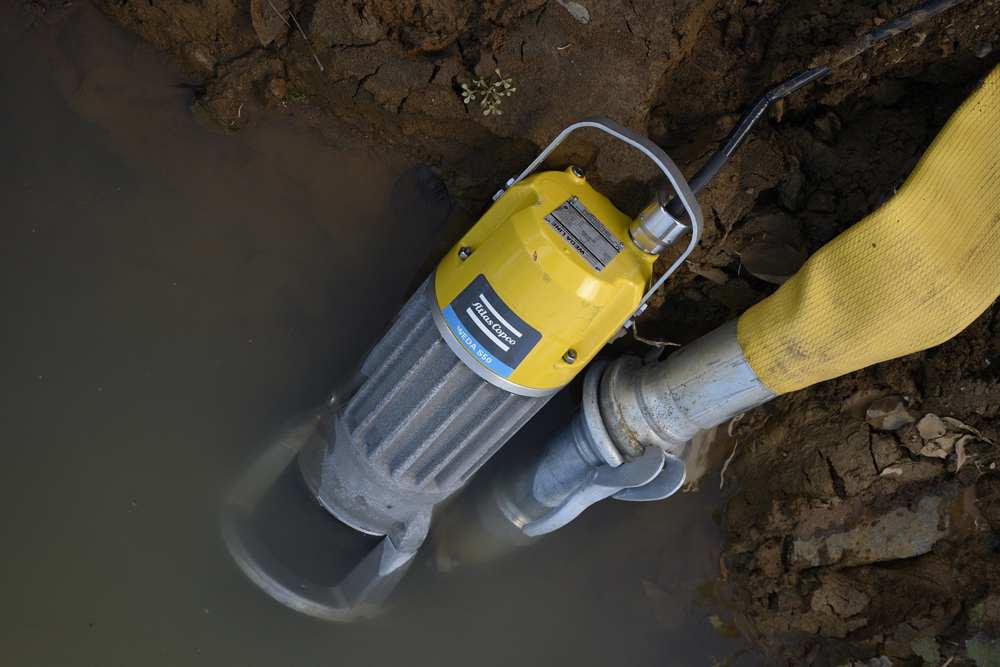
Everything about the WEDA S50 is configured for ease of operation and maintenance. WEDA seal systems have a unique modular design, thus allowing for flexibility and ease of maintenance. Service technicians can change S50 seals at the job site with minimum impact on pump availability. The pump has an external oil inspection plug, making it a simple maintenance task to perform quick inspections.
The S50 base is designed for stability while the bottom-side discharge allows the passage of solids up to 50 mm. It offers several options and sizes for connections and flow direction is changeable from 90 to 180 degrees on the discharge.
An extensive network of dealers and service technicians supports the WEDA S50 along with the entire WEDA range. Spare parts are readily available and easy to fit.
Xylem says it is leading the water sector in the European Commission’s transition to Stage V diesel engines with the upcoming launch of two new innovative and sustainable Godwin Dri-Prime S Series pumps. These four-inch models, to be available in the autumn, will add to Xylem’s comprehensive portfolio of Stage V-compliant Godwin S Series dewatering pumps. The company has also released a ‘Stage V Diesel Engine Guide’, offering timely guidance for those making the transition.
Simon Mathias, Xylem’s regional product manager, said: “As the deadline for Stage V implementation approaches, our new ‘Stage V Diesel Engine Guide’ and the launch of our next-generation, efficient Stage V-compliant dewatering pumps later this year, reflects our commitment to support our customers in complying with EU regulations. Our new pumps will benefit customers through enhanced hydraulic performance and efficiency, offering up to 20% greater uptime and 15% improved fuel economy versus older Dri-Prime models.”



